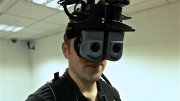
An interquartile range is a statistical measurement that defines the middle range of numbers in a distribution and can be used to approximate the most common scores. In statistics quartiles are numbers that divide a distribution (a range of numbers) into quarters. It is a way to show how common particular numbers are in regards to where they fall in the distribution. Quartile 1 is the lower 25% of scores, Quartile 2 is 50% of the scores, and quartile 3 is 75% of the scores (quartile 4 is not referenced because that would just be all of the scores).
The interquartile range is the scores that range from quartile 1 to quartile 3 and is a measurement of the middle 50% of the scores in a distribution. The middle 50% generally holds the majority of the scores and is a good way to get an estimation of an average score. The interquartile range is calculated by subtracting the first quartile score from the third quartile score.
Source: www.alleydog.com

|
GK Basic General Knowledge Mobile Application (Shlok Consulatants)
|
You might also like:
















